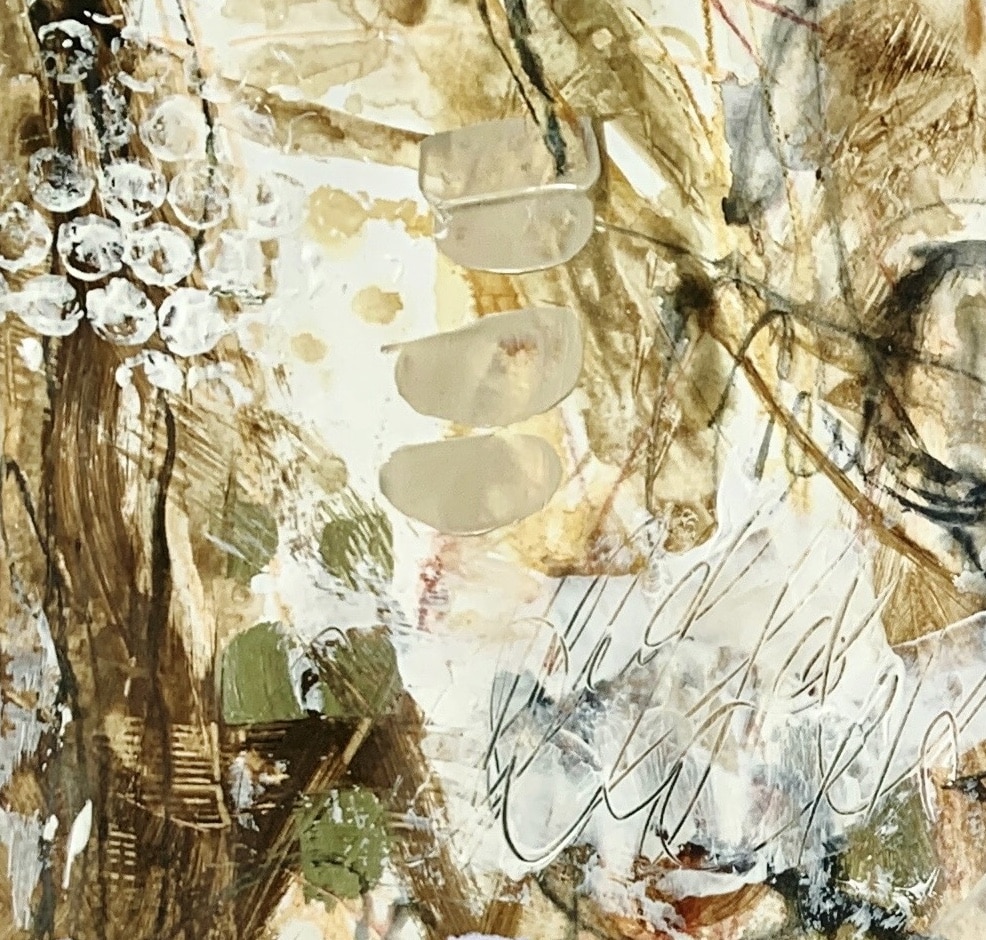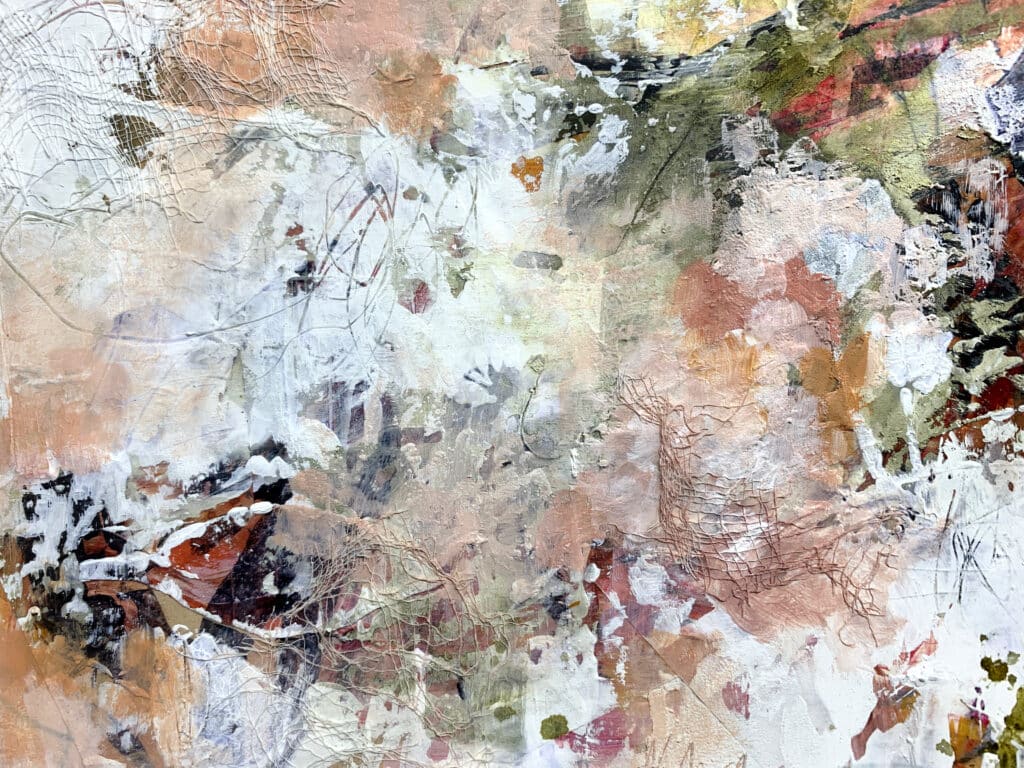Layer 1: Building a Base with Acrylic Colors
- Step: Apply chunks of acrylic colors in different values (use one color + white + unbleached titanium + Burnt Sienna).
- Example: I used pink as my base color.
- Brush Technique: Work with a small brush to give yourself more time to blend and spread the paint around.
- Pointer: Focus on creating a variety of shades from the same color. This will give your base depth and interest.
Layer 2: Adding Texture with Dry Media
- Step: Make marks with pencils, soft pastels, or oil pastels.
- Color Choice: Use the same color palette as in Layer 1.
- Mark-Making: Experiment with different styles—try small marks, long lines, or abstract shapes.
- Pointer: Think about how the marks interact with the paint—do they add energy or quiet details? Aim for variety.
Layer 3: More Acrylic Marks
- Step: Continue adding acrylic marks, changing up the values (light and dark) of your main color.
- Mark-Making: Try blending (“smooshing”) some paint, but also add small, detailed marks, long lines, or swirls.
- Pointer: This layer is about creating movement and flow. Think about how you can guide the eye around the canvas.
Layer 4: Introducing Contrast
- Step: Use water-soluble oil pastels to make contrasting marks with black and Burnt Sienna.
- Pointer: Contrast is key to making elements pop. Notice how the darker colors break up the lighter areas and add visual interest.
Layer 5: Adding a New Color
- Step: Introduce a new acrylic color that contrasts with the color you used in Layer 1.
- Pointer: This is where the composition really starts to come alive. How does the new color interact with the others? Look for areas where you can create a dynamic balance.
Layer 6: Defining with Black Acrylic
- Step: Make bold marks with black acrylic paint using a brush.
- Pointer: These black marks add structure and definition. Think about where the composition needs clarity or strength.
Layer 7: Finishing with Black Doodles
- Step: Use a black pencil or pen to doodle in the lighter areas. Add more pencil or pastel scribbles to bring everything together.
- Pointer: This is your final layer of detail—use it to add personality and a sense of completion. Think of these doodles as the playful finishing touches to your piece.
Layer 8: Final Scribbles
- Step: Scribble more lines using pencils or pastels to create additional texture.
- Pointer: Let this step be spontaneous. Think about adding energy to areas that feel too quiet or blank—allow the scribbles to act as a final burst of movement or detail.
These steps build upon each other to create a dynamic abstract composition, encouraging you to play with color, texture, and mark-making while adding depth and contrast.




